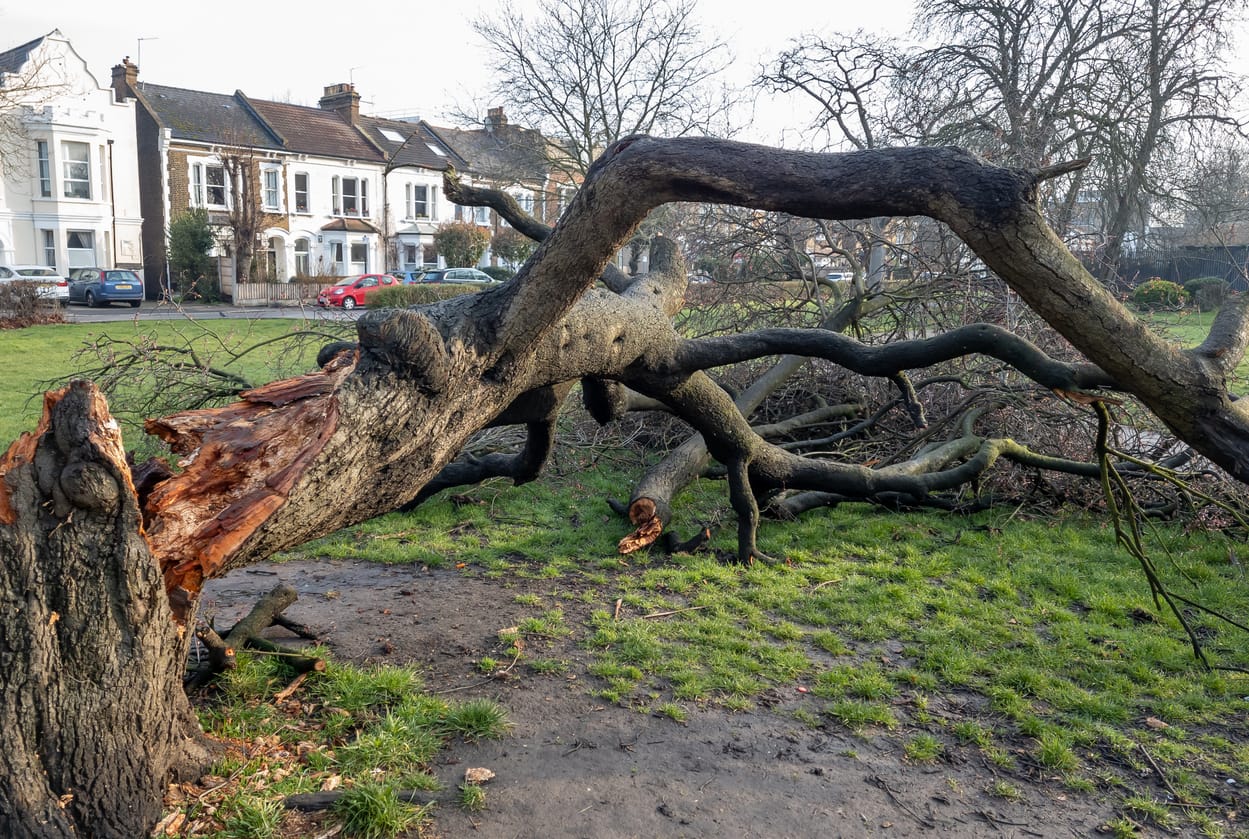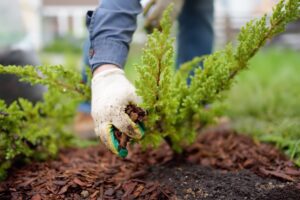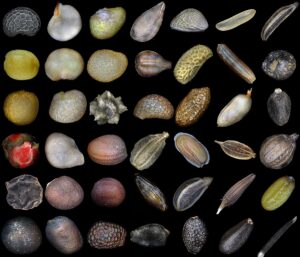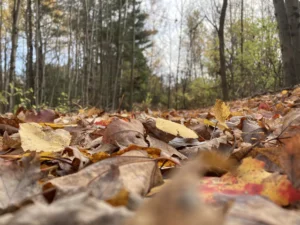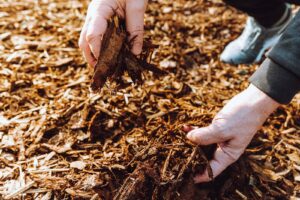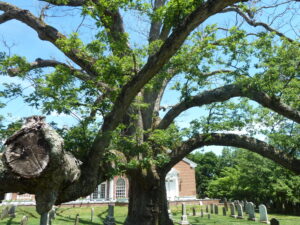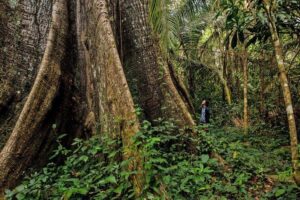What to Do with Storm-Damaged Trees: A Comprehensive Guide
After a severe storm passes through your area, assessing the damage to your trees becomes a priority task for homeowners. Storm-damaged trees not only affect the aesthetics of your property but can also pose significant safety risks if not addressed properly. This guide will walk you through the essential steps to evaluate, manage, and potentially save your storm-damaged trees.
Assessing the Damage
When storms subside and it’s safe to venture outside, your first priority should be assessing the extent of damage to your trees. Different types of damage require different approaches.
Types of Tree Damage
Before making any decisions, you need to understand what type of damage your trees have sustained:
- Minor damage: Small broken branches, minimal leaf loss
- Moderate damage: Several large branches broken, partial canopy loss
- Severe damage: Split trunks, uprooted trees, major structural damage
- Total loss: Tree completely uprooted or snapped at the trunk
Safety First
Remember that storm-damaged trees can be extremely dangerous. According to the U.S. Forest Service, “damaged limbs may still be partially attached or lodged in the crown, where they can fall at any time” (Forest Service Storm Damage Assessment Guide).
Always follow these safety precautions:
- Stay clear of downed power lines
- Wear proper protective equipment including hard hats, gloves, and safety glasses
- Never work alone when assessing or clearing storm damage
- Avoid working in adverse weather conditions
- Contact professionals for large or complicated tree situations
When to Save vs. When to Remove
One of the most challenging decisions you’ll face is determining whether a damaged tree can be saved or should be removed. This decision depends on several factors including the tree’s health before the storm, the extent of damage, and the tree’s location.
Trees That Can Likely Be Saved
You can likely save trees when:
- Less than 50% of the crown (branches and leaves) is damaged
- The main trunk is intact without splits or major wounds
- There are still sufficient living branches to produce foliage
- The tree is a desirable species and important to your landscape
- The tree is young and vigorous, with good recovery potential
Trees That Should Be Removed
Consider removal when:
- More than 50% of the crown is damaged
- The main trunk is split or severely damaged
- The tree is leaning at a dangerous angle
- Major roots are exposed or severed
- The tree poses a risk to structures, utility lines, or people
- The tree was already unhealthy before the storm
Immediate Actions for Storm-Damaged Trees
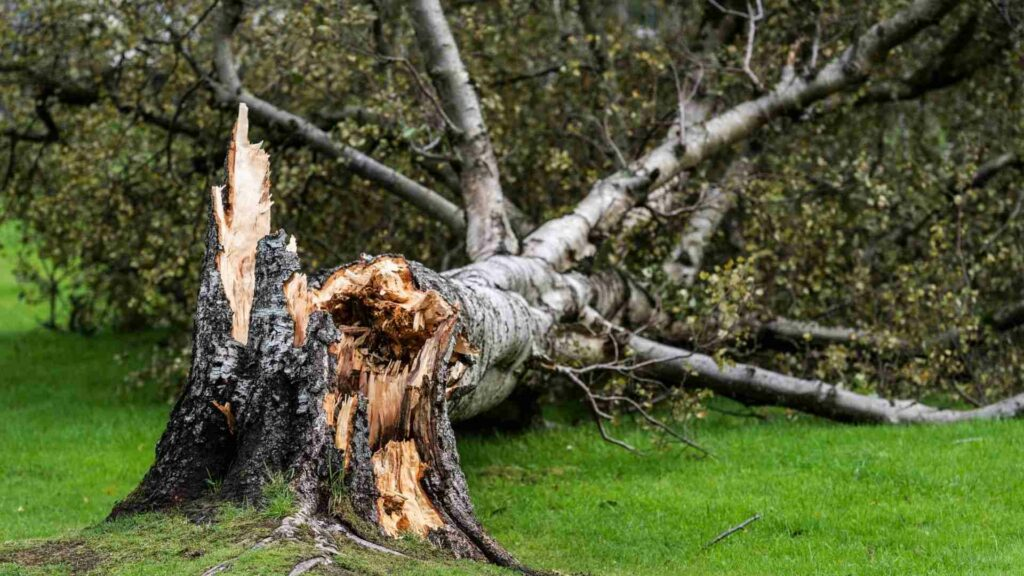
Clean-up Priorities
After assessing damage, prioritize your clean-up efforts in this order:
- Remove hazards first: Address any hanging branches or unstable trees that pose immediate dangers
- Clear access ways: Remove debris from driveways, walkways, and public rights-of-way
- Address valuable trees: Focus on saving trees that are important to your landscape
- General clean-up: Handle smaller branches and debris last
Proper Pruning Techniques
For salvageable trees with broken branches, proper pruning is essential:
- Make clean cuts just outside the branch collar (the swollen area where the branch meets the trunk)
- Don’t leave stubs, which invite disease and pests
- Don’t apply wound dressings or paint, as research shows these can actually harm trees
- Remove torn bark by carefully cutting away loose sections to a place where it’s firmly attached
Long-term Care for Recovering Trees
Watering and Mulching
Damaged trees need extra care to recover:
- Water regularly during dry periods (equivalent to 1 inch of rainfall per week)
- Apply a 2-3 inch layer of organic mulch in a ring around the tree (keep mulch away from the trunk)
- Extend the mulch to the drip line of the tree where possible
Fertilization Considerations
| Time Since StormFertilizer RecommendationRationale0-6 monthsAvoid fertilizationCan stimulate excessive growth before tree stabilizes6-12 monthsLight application of balanced fertilizerBegin supporting recovery once stabilized1-2 yearsRegular fertilization programSupport continued recovery and growth2+ yearsNormal maintenanceTree should be back on regular care schedule |
|---|
Do not fertilize trees immediately after storm damage. This can force weak growth that the damaged root system cannot support. Wait until the following growing season to consider a light fertilization program.
Monitoring for Secondary Problems
Storm-damaged trees often face secondary challenges:
- Pest infestations: Damaged areas can attract insects
- Disease development: Open wounds provide entry points for pathogens
- Sunscald: Suddenly exposed bark can be damaged by intense sunlight
- Root issues: Compacted soil from clean-up equipment can stress roots
Monitor your trees regularly for these issues and address them promptly to prevent further decline.
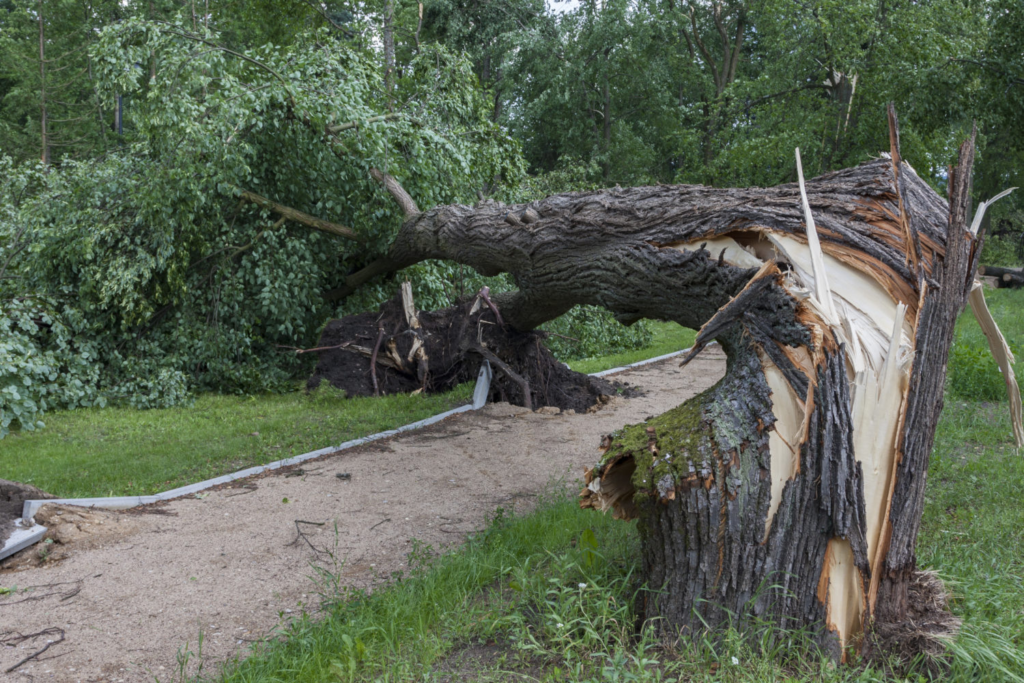
When to Call a Professional
While you can handle some storm damage yourself, many situations require professional help.
Hiring a Certified Arborist
The U.S. Department of Agriculture recommends consulting certified arborists for complex tree situations (USDA Urban Tree Risk Management Guide). A certified arborist should be consulted when:
- Trees are large or near structures
- Damage involves the main trunk
- Work requires climbing or chainsaw use
- Trees are leaning or partially uprooted
- You’re unsure about the tree’s structural integrity
Questions to Ask When Hiring Tree Services
Before hiring any tree service:
- Are they certified arborists?
- Do they have liability insurance and workers’ compensation?
- Can they provide references from similar work?
- Will they follow ANSI A300 pruning standards?
- Do they offer a written estimate before beginning work?
Preventing Future Storm Damage
While you can’t prevent storms, you can take steps to minimize future tree damage.
Proper Tree Selection and Placement
Choose the right tree for the right place:
- Select species known for strong wood and branch structure
- Consider mature size when planting near structures
- Group trees in clusters where appropriate to provide mutual protection
- Avoid planting brittle species like silver maple or Bradford pear in vulnerable locations
Regular Maintenance
Preventive care significantly reduces storm damage potential:
- Schedule regular professional inspections
- Remove dead or diseased branches promptly
- Consider cabling or bracing for trees with structural weaknesses
- Maintain good soil conditions and appropriate mulching
- Prune young trees to develop strong structure
Repurposing Storm-Damaged Wood
Instead of sending all debris to landfills, consider these creative uses for storm-damaged wood:
- Mulch: Chip smaller branches for garden mulch
- Firewood: Cut appropriate species into firewood (following local regulations)
- Wildlife habitat: Create brush piles for small animals
- Lumber: Large, valuable trees might be milled into lumber
- Artisan crafts: Wood from significant trees can become furniture or art pieces
Understanding Insurance Coverage
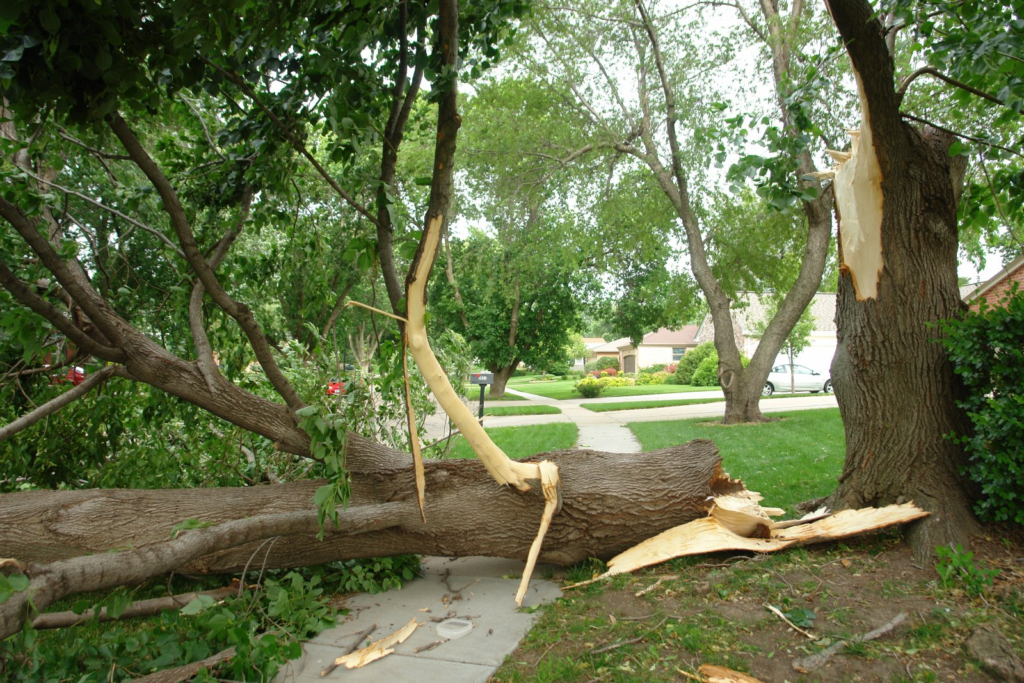
Homeowner’s Insurance Considerations
Most homeowner’s insurance policies cover tree damage to structures but have specific limitations:
- Damage to houses, fences, and other insured structures is typically covered
- Tree removal costs are often only covered if the tree damaged a structure
- Preventive removal of damaged trees that haven’t hit structures may not be covered
- Damage from neglected maintenance is often excluded
- Documentation is crucial—take photos before clean-up begins
Contact your insurance provider promptly after storm damage occurs to understand your specific coverage.
Community Resources
Government Assistance Programs
After major storms, various assistance programs may become available:
- FEMA disaster assistance in federally declared disaster areas
- State emergency management agencies
- Local community disaster response programs
The U.S. Environmental Protection Agency provides resources for community storm recovery, including tree management guidance (EPA Storm Recovery Resources).
Local Disposal Options
Check with your municipality about:
- Special curbside pickup for storm debris
- Temporary disposal sites
- Free mulching services for community residents
Conclusion
Dealing with storm-damaged trees requires careful assessment, appropriate action, and sometimes professional assistance. By understanding how to evaluate damage, knowing when to save versus remove trees, and implementing proper recovery care, you can preserve valuable trees when possible and safely remove those that pose hazards. Remember that patience is key—trees recover slowly, and it may take several years before you can fully assess their recovery potential.
With proper care and management, many storm-damaged trees can return to health and continue providing beauty, shade, and environmental benefits to your property for years to come.
